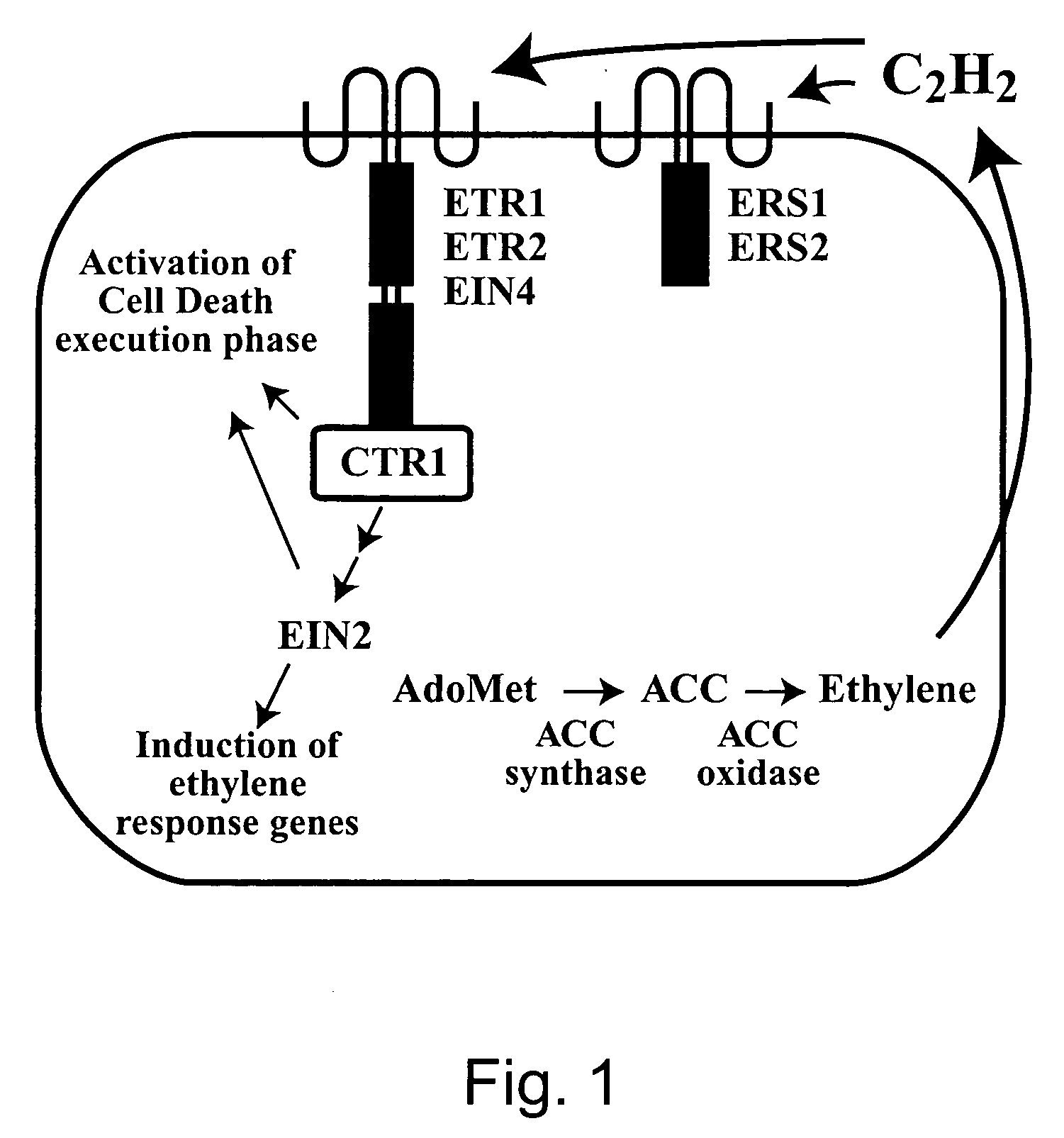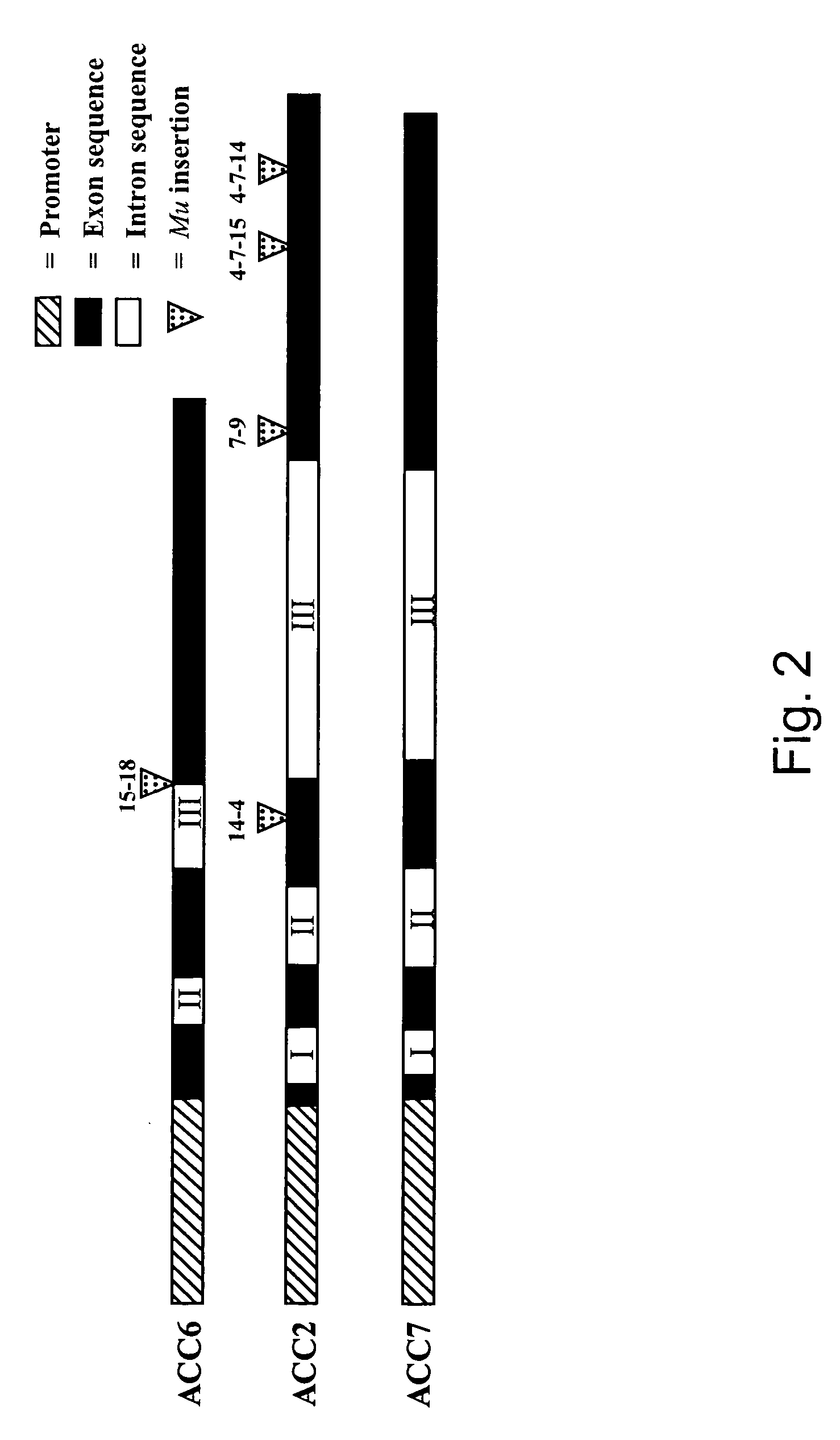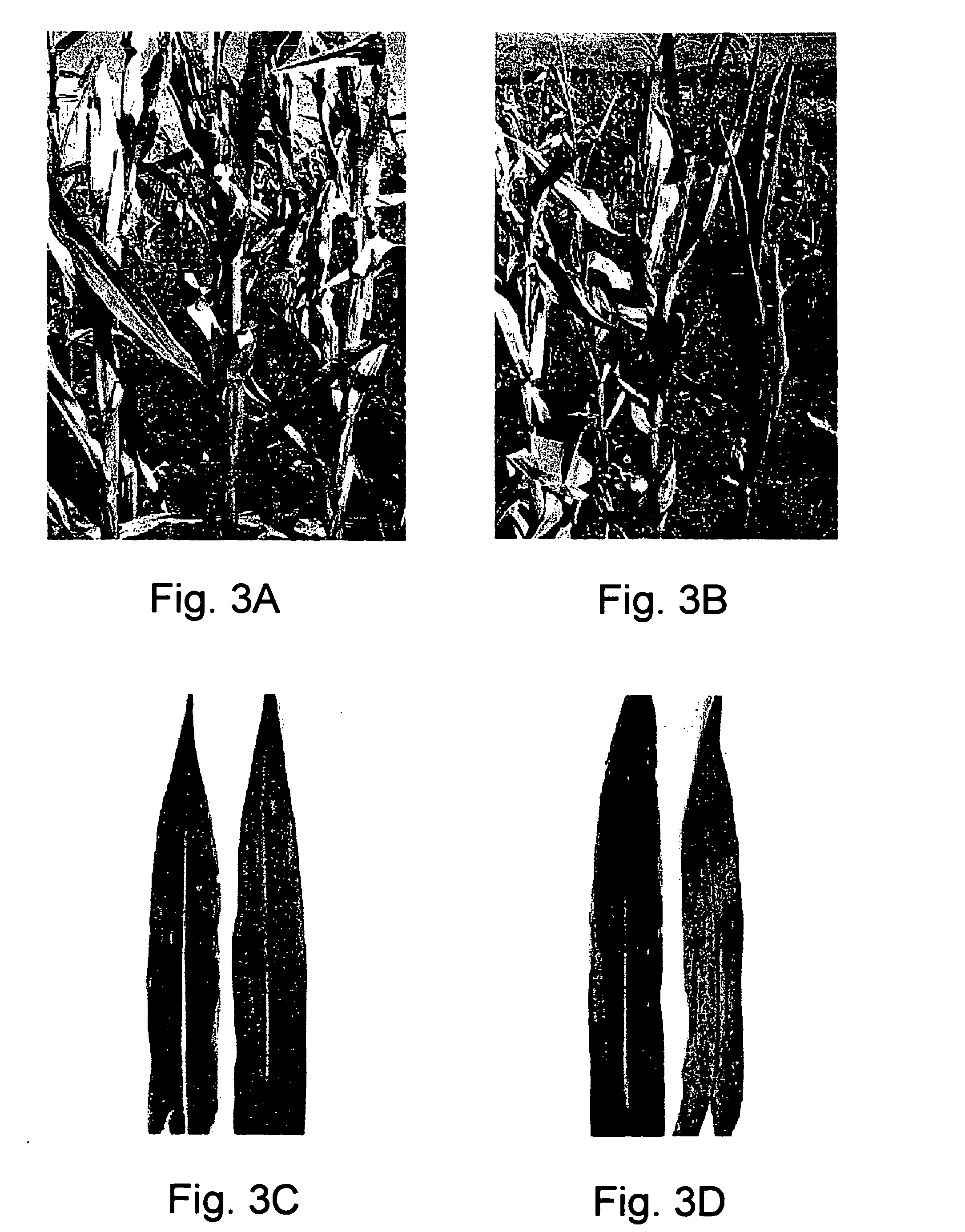Engineering single-gene-controlled staygreen potential into plants
a technology of staygreen potential and plant, which is applied in the field of modulating staygreen potential in plants, can solve the problems of little progress in understanding the biochemical, physiological or molecular basis of genetically determined stay-
- Summary
- Abstract
- Description
- Claims
- Application Information
AI Technical Summary
Benefits of technology
Problems solved by technology
Method used
Image
Examples
example 1
Isolation of Maize ACC Synthase Knockouts
[0296] Because ethylene has been associated with promoting leaf senescence in some species, to introduce staygreen potential into, e.g., maize, we undertook to reduce ethylene biosynthesis in maize leaves through the inactivation of ACC synthase genes. The maize ACC synthase gene family is composed of three members: ACS2, ACS6, and ACS7. In order to isolate ethylene mutants, we screened for disruptions of each member of the ACC synthase gene family using the Trait Utility System for Corn (TUSC). To date, we have determined the exact Mu insertion site for 8 mutant lines (three ACS6 and five ACS2) by sequencing across the Mu / ACC synthase junction. Five insertions were stably inherited; their positions are indicated in FIG. 2, which also schematically depicts ACS7.
[0297] A pronounced staygreen phenotype was observed in leaves of those plants in which a single gene member of the ACS family was present in a heterozygous mutant state (see FIG. 3,...
example 2
Sequence Alignments and Phylogenetic Analysis
[0358] A phylogenetic analysis of ACC synthase sequences described herein, e.g., (A47 (also known as ACS2 or ACC2 herein), A50 (also known as ACS7 or ACC7 herein), A65 (also known as ACS6 or ACC6 herein)) from maize, with ACC synthase sequences from other species, is shown in FIG. 7 (ACSgrowtree2), where Arabidopsis sequences are indicated by (AtACS . . . ), tomato sequences are indicated by (LeACS . . . ), rice sequences are indicated by (indica (OsiACS . . . ), and japonica (OsjACS . . . )), wheat sequences are indicated by (TaACS . . . ), and banana sequences are indicated by (MaACS . . . ). In the analysis, the indicated ACC synthases fall into two subfamilies. One of the subfamilies is further subdivided into monocot (Zm (maize), Osi, Osj, Ta, Ma) ACS genes and dicot (At, Le) ACS genes.
[0359] Various peptide consensus sequences alignments of ACC synthase sequences described herein, e.g., (A47 (also known as ACS2 or ACC2 herein), A5...
example 3
ACC Synthase Knockouts by Hairpin RNA Expression
[0360] As noted previously, knockout plant cells and plants can be produced, for example, by introduction of an ACC synthase polynucleotide sequence configured for RNA silencing or interference. This example describes hairpin RNA expression cassettes for modifying ethylene production and staygreen phenotype, e.g., in maize. As noted previously, knockout of ACC synthase(s), e.g., by hpRNA expression, can result in plants or plant cells having reduced expression (up to and including no detectable expression) of one or more ACC synthases.
[0361] Expression of hairpin RNA (hpRNA) molecules specific for ACC synthase genes (e.g., promoters, other untranslated regions, or coding regions) that encode ACC synthases in plants can alter ethylene production and staygreen potential, sterility, crowding resistance, etc. of the plants, e.g., through RNA interference and / or silencing.
[0362] hpRNA constructs of ACS2 (PHP20600) and ACS6 (PHP20323) wer...
PUM
| Property | Measurement | Unit |
|---|---|---|
| Fraction | aaaaa | aaaaa |
| Electrical resistance | aaaaa | aaaaa |
| Antisense | aaaaa | aaaaa |
Abstract
Description
Claims
Application Information
 Login to View More
Login to View More - R&D
- Intellectual Property
- Life Sciences
- Materials
- Tech Scout
- Unparalleled Data Quality
- Higher Quality Content
- 60% Fewer Hallucinations
Browse by: Latest US Patents, China's latest patents, Technical Efficacy Thesaurus, Application Domain, Technology Topic, Popular Technical Reports.
© 2025 PatSnap. All rights reserved.Legal|Privacy policy|Modern Slavery Act Transparency Statement|Sitemap|About US| Contact US: help@patsnap.com



